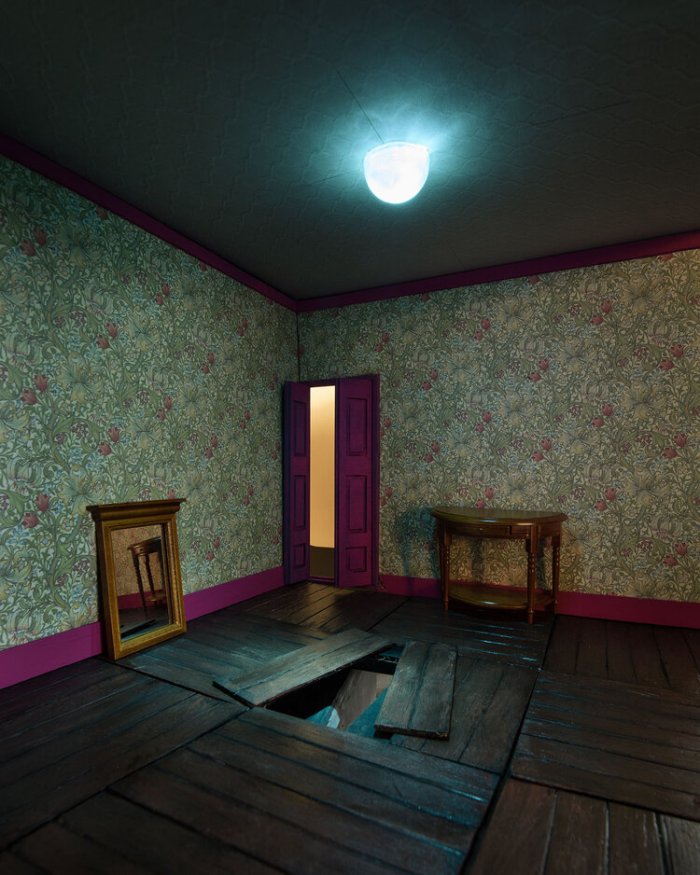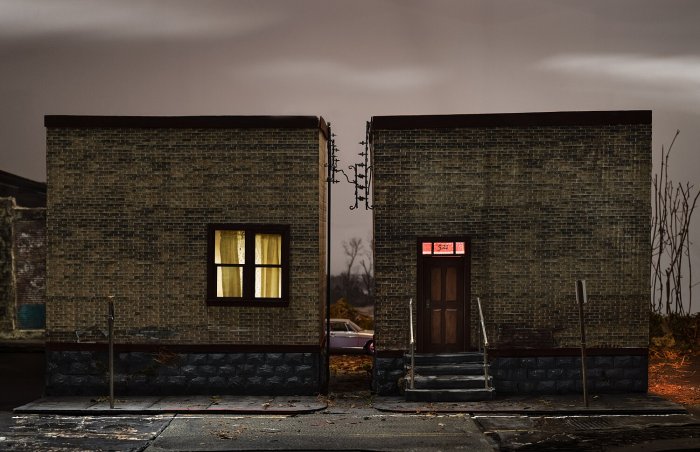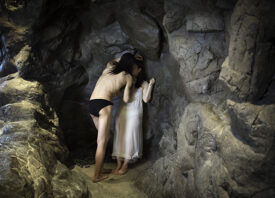Search this site
Tales of Mystery and Suspense, Created in Miniature



“I have often said that the scenes are before or after something has happened,” the photographer Mark Peterman tells me. Inspired by mystery novels and ambient music, his series Constructed Realities takes place in a fictional world, created in miniature. Each image tells a tale of suspense, conceived not in real life but in the artist’s imagination.
Peterman first started building miniatures after completing several full-scale sets. Miniature scale models gave him the freedom to create scenes that would otherwise be impossible. “Each scene starts with a story idea,” he says. “I usually write a snippet of a short story; that can be one sentence or a more elaborate bit of micro fiction.
“I often have a protagonist in a situation and an idea for a scene develops from there. I end up with quite a bit of creative source material that includes sketches, stories, journal notes, etc. that I like to surround myself with. I sketch what I want a scene to look like and often do a technical drawing with dimensions as well. I have kept sketchbooks and journals for years and use them as a daily part of my creative process to document my work.”
His main materials are balsa wood or cardboard. “Once the basic structure is completed, I add texturing elements and some printed textural elements and the finished models contain very intricate details,” he explains. Depending on the model, the building might require a few days or a week to complete.
The process of generating the fictional stories that inspire the work is far more mysterious, driven largely, Peterman suspects, by his subconscious. “Most of the story snippets that I create a scene from are drawn from real life,” the artist says. “I also project fictional situations on life experiences to come up with story ideas.” Works of literature and art have also helped shape his sensibility.
“There isn’t one particular work that provided influence but a melting pot of many things over time,” Peterman admits. “That being said, some of my favorite artists in various genres include Brian Eno, John Le Carré, Roman Polanski, John Atkinson Grimshaw.” The connection with the last of the four is perhaps the most apparent, as Peterman shares the painter’s affinity for nighttime, mist, and iridescent gaslit streets. Comparisons with Gregory Crewdson might also be fitting–except with one key difference: there are no people in Peterman’s photographs.
“I feel like the scenes are a space that needs to exist outside of the presence of humans,” he explains. “Sometimes, it’s easier to imagine yourself in a scene if you don’t see another human in the frame.” We become inhabitants of these spaces, walking past Peterman’s shop windows on a rainy night or cozying up by the fire as the moon rises just out our windows.
But at the same time, we’re also spectators, looking in at a world that is not our own. Perhaps looking at Peterman’s photographs is similar to peering into an expertly crafted dollhouse, bringing with it the same rush of voyeurism and anticipation. Peterman’s imagination is a place defined, at times, by a sense of sleepy unease: a light turned on when it shouldn’t be, a car run off the road, floorboards creaking in the night.
Photography is the perfect medium for Constructed Realities, a project that is, at its heart, an investigation of what’s real and what isn’t. He invites us, as onlookers, to play the role of detective. “Quite a few people don’t realize they are scale models when they first view them,” Peterman explains. “I really enjoy playing with the concept of ‘breaking the fourth wall’ in a scene. If I can reveal something that makes someone question the reality of what they are seeing, I think that’s a good place to be.”

At their best, the photographs can almost “trick” the creator himself, pulling him from this reality and into his own. “The images that I enjoy the most are the ones that make me think about what else can exist in this world that I am creating,” he tells me. “The Way Out is Through is a scene that really became more powerful as a finished photo more so than the original idea. I see the boards torn up in the floor and wonder where it leads and what might be lurking down there.” Elsewhere, in the hallway, the lights are still on. We don’t know if someone’s just left–or if they’re about to enter.






All images © Mark Peterman
Read this next…
Surreal Photography: 12 Creative Techniques to Try



